INSIDE ISSUE 19.47 | Nov. 20, 2020
 BIG STORY: State struggles with education delivery models
BIG STORY: State struggles with education delivery models
NEWS BRIEFS: Hutto says Senate Democrats will be relevant
LOWCOUNTRY, Ariail: Nurdle hurdles
COMMENTARY, Brack: State should take coming surge more seriously and act
SPOTLIGHT: Charter Communications
FEEDBACK: On the gulf between views of the world
MYSTERY PHOTO: Cool roof tiles
State struggles with education delivery models

By Gregg Bragg, special to Statehouse Report | South Carolina educators and administrators are struggling to engage students while developing effective solutions for teaching during the COVID-19 pandemic.
“We need to have our teachers directing virtual classes or face-to-face, but not both, and only one topic at a time,” said Sherry East, president of the S.C. Education Association.
Teachers with whom she has spoken agreed.
A Beaufort teacher, for example, wrote the state needed to reconcile the self-paced learning of virtual programs with the needs of administrators to show classroom-style progress.
“I have students working at different sections within the curriculum,” the teacher wrote in the email, which was shared by East with Statehouse Report. “Now it’s time for grades and I am being told to put in zeros for missed assignments in order to reflect an accurate account of the student grade. I think that is unfair to the student.”
Another teacher from Lexington described the need for more structure inside the classroom and more infrastructure to help students.
“Our district is doing virtual OK,” the teacher wrote, “but access to WiFi isn’t a safe assumption. [There are] iPads that won’t hold a charge, charging cords that don’t work, login difficulties, passwords and usernames that are too complicated for little kids to enter, [and problems] getting kids the materials they need for lessons.”
What’s happening across South Carolina
The state Department of Education required South Carolina’s 81 school districts to teach using two models — face-to-face learning and virtual learning with online classes through Zoom and other platforms.
 “Pretty much every district, except for a handful, started off the school year offering both of those, though a few took a little longer to phase those in,” Ryan Brown, chief communications officer for the S.C. Department of Education, said in an interview this week.
“Pretty much every district, except for a handful, started off the school year offering both of those, though a few took a little longer to phase those in,” Ryan Brown, chief communications officer for the S.C. Department of Education, said in an interview this week.
Schools had plenty of wiggle room, he said.
But another model emerged, too, East said — a hybrid in which students have face-to-face learning in smaller classes for part of the week and virtual classes at other times.
“We’re all over the place,” she said. Class numbers are cut roughly in half, for example, and students alternate days of in person attendance with their classmates during the same scheduled time. The program facilitates socially-distanced learning and helps keep participants safe, but can divide an instructor’s attention.
What’s next
Developing an overarching solution out of the trial-and-error experiences of teachers has proven evasive, in part, because every solution is bad for someone. South Carolina’s embrace of self-rule is hard to dislodge, especially in school districts, Brown said.
“I think we’re trying to make school as normal as possible with the pandemic and the safety conditions that are in place,” he said. “I think everybody’s trying to do the best they can with the cards they’ve been dealt. People tend to believe that local communities know their own needs best, and that’s something [the state is] comfortable doing.”
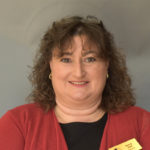
East said she wanted a broader solution based on guidelines established by the Centers for Disease Control (CDC) and the state’s AccelerateED task force.
“But we haven’t been doing that,” she said. “We said teachers should not be teaching in person and virtual classes simultaneously, but we are. And when I asked about it, I was told there simply aren’t any teachers to hire.
“A lot of teachers just walked out, because they were forced to go back to the classroom and they didn’t want to be in the buildings. Whittaker Elementary in Orangeburg and Lexington High School have both closed after infections spiked beyond the limits set by the S.C. Department of Health and Environmental Control (DHEC),” said East, a fan of virtual learning.
Brown said teachers, to the greatest degree possible, were given a choice about returning to the classroom but stressed that local policy prevailed.
“What we’ve encouraged them [districts] to do is work with those teachers individually based on the recommendations from the CDC and DHEC, but I can’t say everyone was accommodated.”
Brown said the ideal solution for education during a pandemic was still a work in progress that the state will continue to tweak, regardless of the availability of a vaccine.
A teacher’s reflections
Greenville high school teacher Cliff Lee offered two paths forward in an interview with Statehouse Report.
“The first step to solve the problems with virtual learning [is] an acknowledgement from all educators and their leaders that virtual educational settings are distinct from traditional education and that it requires specialized skills,”he said. “The differences between these settings require special training for instructional and leadership practices. “
The second step, he said, was more honesty and transparency about decision-making with virtual learning.
“If an educational leader makes a decision that causes hardship for educators, those educators are owed an honest explanation of why and how the decision was made. The third step is to give the educators themselves as much support as possible. This includes items like adequate planning time, instructional autonomy, and a meaningful way to voice concerns and problems.”
East and Brown saw value in continuing to invest in virtual education.
“If we can get federal COVID money applied to buying devices and expanding WiFi in South Carolina, get past the backlog of ordering devices and solve some of the technology issues, it would definitely help elevate performance in our rural areas,”East said.
Gregg Bragg is a freelance reporter who lives on Johns Island.
- Have a comment? Send to: feedback@statehousereport.com
Hutto says Senate Democrats will be relevant
Staff reports | State Sen. Brad Hutto, the Orangeburg Democrat elected to lead the Senate Democratic Caucus, said members would be relevant despite a shrinking minority.
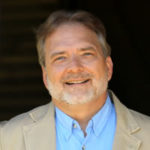
Earlier this month, three veteran Democrats — Sens. Vincent Sheheen of Camden, Floyd Nicholson of Greenwood and Glenn Reese of Spartanburg — lost re-election campaigns. In January, Republicans will have a larger Senate majority with 30 of 46 seats.
“Even though our numbers are down, we still owe it to all of South Carolina to prove the other side of the issues,” Hutto said, adding that Democrats and Republicans in the Senate have worked well together for years on a variety of issues.
“It’s important that those policy differences be given significant voices. We’re going to work hard on that,” he said, emphasizing the caucus’s focus on improving education, health care, wages and more.
Also in recent news:
![]() Execution scheduled but no drug available. The state of South Carolina has scheduled what would be its first execution in nearly a decade on Dec. 4, but corrections officials said they don’t have any lethal injection drugs to do so. The prisoner’s attorneys are seeking a stay of execution for various reasons, including a contention that the state is withholding information about its execution methods which keeps the prisoner from making an informed decision about execution options. Read more.
Execution scheduled but no drug available. The state of South Carolina has scheduled what would be its first execution in nearly a decade on Dec. 4, but corrections officials said they don’t have any lethal injection drugs to do so. The prisoner’s attorneys are seeking a stay of execution for various reasons, including a contention that the state is withholding information about its execution methods which keeps the prisoner from making an informed decision about execution options. Read more.
Virus numbers remain high. South Carolina health officials reported 1,410 new cases of COVID-19 Thursday and 17 confirmed deaths. Out of 9,729 tests reported, 14.5 percent were positive. Almost 4,000 South Carolinians have died from the disease.
State set voting records. State elections officials say 1.3 million registered voters cast absentee ballots — shattering the previous record of 503,000 in the 2016 general election. The presidential election also set the highest turnout percentage since 2008 with 72 percent of registered voters casting ballots. More.
Clyburn re-elected. U.S. Rep. Jim Clyburn, D-S.C., was re-elected unanimously to his leadership position in the U.S. House this week. He will continue to serve as the House majority whip, the third-most powerful role in the House. He told reporters he would focus on the growing COVID crisis, infrastructure and health care. Read more.
Harrison may be next in line. While Democratic candidate Jaime Harrison raised more than $100 million in his campaign against Republican incumbent U.S. Sen. Lindsey Graham, he lost. But Harrison, a former assistant leader of the Democratic National Committee, got national attention with the campaign and it is in position to lead the Democratic National Committee, The Atlantic reported.
Wrong track. AP VoteCast found that 46 percent of South Carolina voters said the U.S. is on the right track and 53 percent of voters said it is headed in the wrong direction. VoteCast also found that, in South Carolina’s heated U.S. Senate race, Democratic challenger Jaime Harrison had the edge over incumbent Lindsey Graham with voters under 45. More.
- Have a comment? Send to: feedback@statehousereport.com
Nurdle hurdles
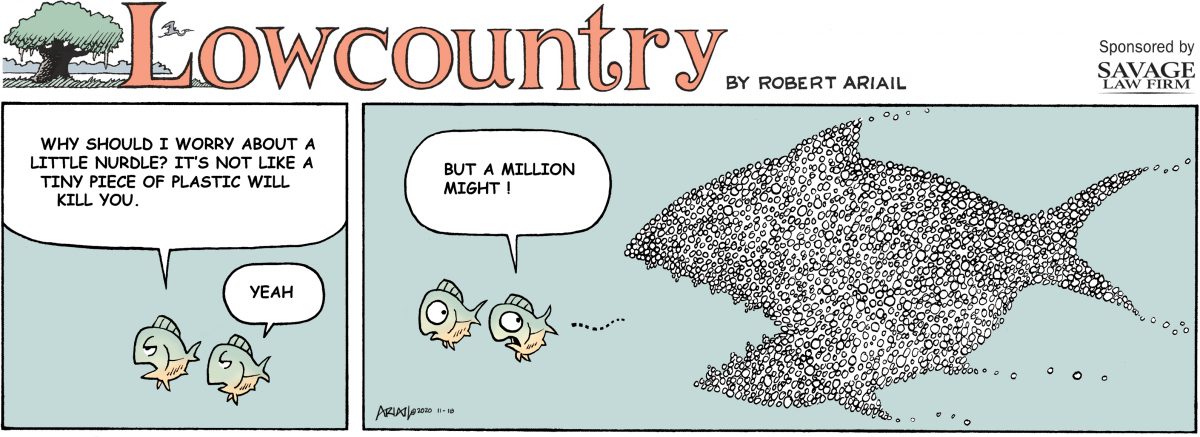
Enjoy this week’s cartoon by Robert Ariail, republished from our sister newspaper, the Charleston City Paper. Love it? Hate it? What do you think: feedback@statehousereport.com.
State should take coming surge more seriously and act
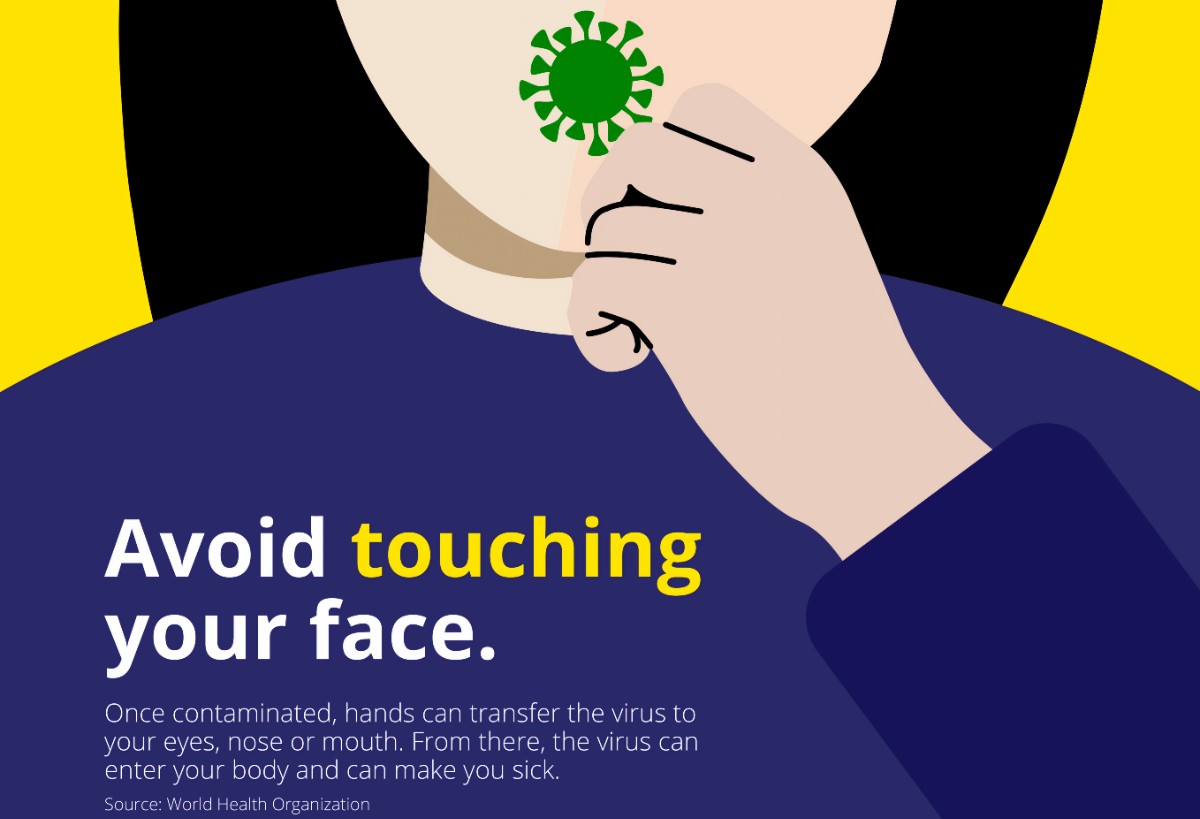
By Andy Brack, editor and publisher | Headed our way for weeks has been a coronavirus surge, a sleeping tiger waiting to pounce its fertile spread as weather cools and people stay inside more.
 Infection rates across the nation have been soaring in recent weeks. Hospitals in the Midwest are at capacity. New restrictions are in effect in the Northeast. The high rates drifted toward the Sunbelt, as reflected in increasingly red maps from Arizona to Tennessee. South Carolina, light orange for weeks, is getting oranger as new coronavirus cases have gone from hundreds a day to more than a thousand.
Infection rates across the nation have been soaring in recent weeks. Hospitals in the Midwest are at capacity. New restrictions are in effect in the Northeast. The high rates drifted toward the Sunbelt, as reflected in increasingly red maps from Arizona to Tennessee. South Carolina, light orange for weeks, is getting oranger as new coronavirus cases have gone from hundreds a day to more than a thousand.
Right now, we’re not ready for what is a coming medical hurricane. In a real hurricane, the state of South Carolina has an emergency plan and lots of specific steps to move people out of harm’s way. But during the pandemic, the state’s government has been sitting on its hands, mostly incompetent. It has been more concerned with issuing hollow warnings and updating websites with data that should, but isn’t, driving real and serious policy and action.
South Carolina still has no uniform state mandate to wear masks or thin crowds. Places where people meet are operating again, albeit with some self-imposed safety protocols. People are moving and interacting almost like a year ago — just look at the traffic in metro areas.
With another surge on the way, we really need to be staying at home, not going to parties and football games.
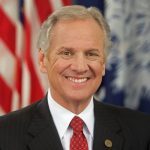
Unfortunately, our state’s leader, Gov. Henry McMaster, has taken a course in denial about the threats from coronavirus from his crony, President Trump. The GOP-run legislature is no better at protecting life, liberty and the pursuit of happiness. Instead, it twiddles as more people die and get the virus.
“We really don’t have any leadership,” said state Sen. Brad Hutto, an Orangeburg Democrat who is the new Senate minority leader. “The governor is in line with Trump. There’s no leadership at DHEC [the S.C. Department of Health and Environmental Control] and the legislature has abandoned the field.
“There is no plan [to deal with the virus spread] and this is going to be a difficult winter. The news of the vaccine is great, but what’s the plan to distribute that?”
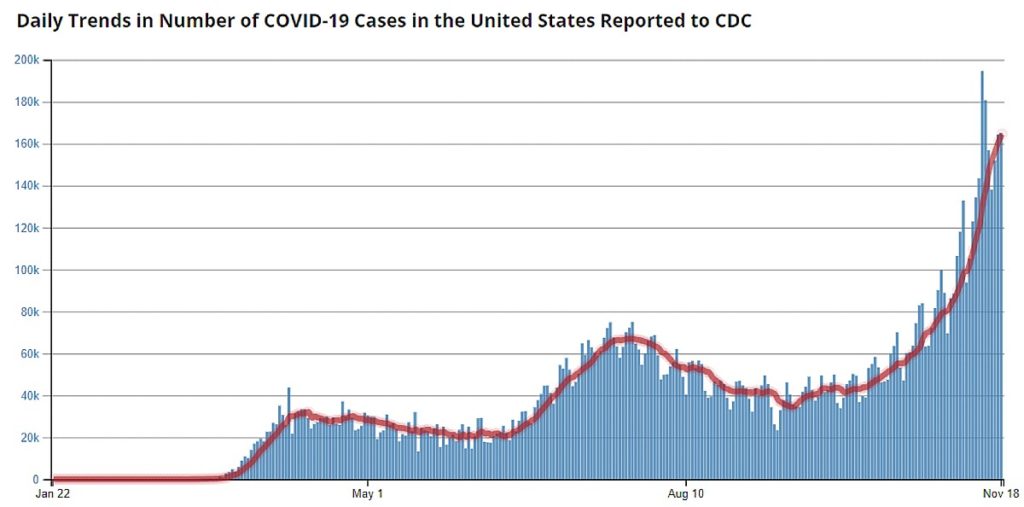
To get a handle on what the state is actually doing to get ready for the surge, we turned to DHEC. It hasn’t returned phone calls but says on a website that coronavirus questions should go to the S.C. Emergency Management Division. So we sent eight questions to both agencies and the governor:
- It looks like COVID-19 is getting worse around the country and that a likely surge is headed this way. What is the state doing to curb the likelihood of another surge?
- When will Gov. McMaster issue a mandatory mask mandate?
- What’s the economic outlook ahead for businesses, particularly with the obvious surge coming this way?
- What more can people do other than wear masks, socially distance, not gather, and wash hands?
- What are projected deaths and infections by the end of the year and by end of Q1 of 2021?
- How would the state characterize the current situation — getting ready to get worse or improving or what?
- What emergency plans are in place to ensure there are enough hospital beds if there is a surge? What’s the latest data on bed availability?
- What’s the state doing to promote and increase testing? Is this a priority and, if not, why?
Want to guess the responses?
Yep, nothing but crickets. Which is what you expect when the state is acting like a circular firing squad.
“This fish stinks from the head,” said Fred Palm of Edisto Island, a retired professor of oversight and investigations who has called on the governor to be bold with more testing. “The basic problem is McMaster controls DHEC staff and board appointments. Independence is squashed.”
God, help us in the terrifying days ahead that wouldn’t be as frightening if we had state leaders who led.
So do your best for your family: Wear masks. Stay at home. Wash your hands. Be socially distanced. Be patient until you can get vaccinated.
Andy Brack is editor and publisher of Statehouse Report. His column also is published in the Charleston City Paper, Florence Morning News, Greenwood Index Journal, The (Seneca) Journal, Camden Chronicle Independent and Hartsville Messenger. Have a comment? Send to: feedback@statehousereport.com.
Charter Communications
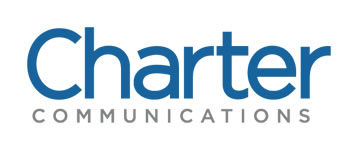 The public spiritedness of our underwriters allows us to bring Statehouse Report to you at no cost. Today, we’re happy to shine the spotlight on Charter Communications, the nation’s fastest-growing TV, internet and voice company. Committed to integrating the highest quality service with superior entertainment and communications products, Charter is at the intersection of technology and entertainment, facilitating essential communications that connect 24 million residential and business customers in 41 states, including South Carolina. In addition to being committed to giving back to the communities we serve, the bedrock of our business strategy is to serve our customers and exceed their expectations.
The public spiritedness of our underwriters allows us to bring Statehouse Report to you at no cost. Today, we’re happy to shine the spotlight on Charter Communications, the nation’s fastest-growing TV, internet and voice company. Committed to integrating the highest quality service with superior entertainment and communications products, Charter is at the intersection of technology and entertainment, facilitating essential communications that connect 24 million residential and business customers in 41 states, including South Carolina. In addition to being committed to giving back to the communities we serve, the bedrock of our business strategy is to serve our customers and exceed their expectations.
“We, at our core, are a service organization,” President and CEO Tom Rutledge says. “And every product we sell has a huge service component.”
- To learn more, visit Charter’s South Carolina services online.
On the gulf between views of the world
To the editor:
![]() I’m a Christian conservative. May I say, with all due respect, that it’s nearly impossible for me to agree with you on anything because you are a liberal/progressive. There is a great gulf between our worldviews. That gulf also applies to the two major political parties.
I’m a Christian conservative. May I say, with all due respect, that it’s nearly impossible for me to agree with you on anything because you are a liberal/progressive. There is a great gulf between our worldviews. That gulf also applies to the two major political parties.
I believe the root of the differences between a majority of Democrats and most Republicans has to do with their interpretations of what is right and wrong. Millions simply believe whatever is right in their own eyes, especially Democrats.
My belief about what is right and wrong is based on the Bible and believing in every word in it. Therefore, for example, I believe that almost all abortions and homosexuality (especially same-sex marriage) are morally wrong. I cannot vote for anyone who sees it differently.
I also believe that a Christian capitalistic republic of hardworking people is far better for America than socialistic liberalism.
— Donnell Hiers, Greenwood, S.C.
Send us your thoughts
We love hearing from our readers and encourage you to share your opinions. But to be published, you’ve got to provide us with contact information so we can verify your letters. Letters to the editor are published weekly. We reserve the right to edit for length and clarity. Comments are limited to 250 words or less. Please include your name and contact information.
-
- Send your letters or comments to: feedback@statehousereport.com
Cool roof tiles
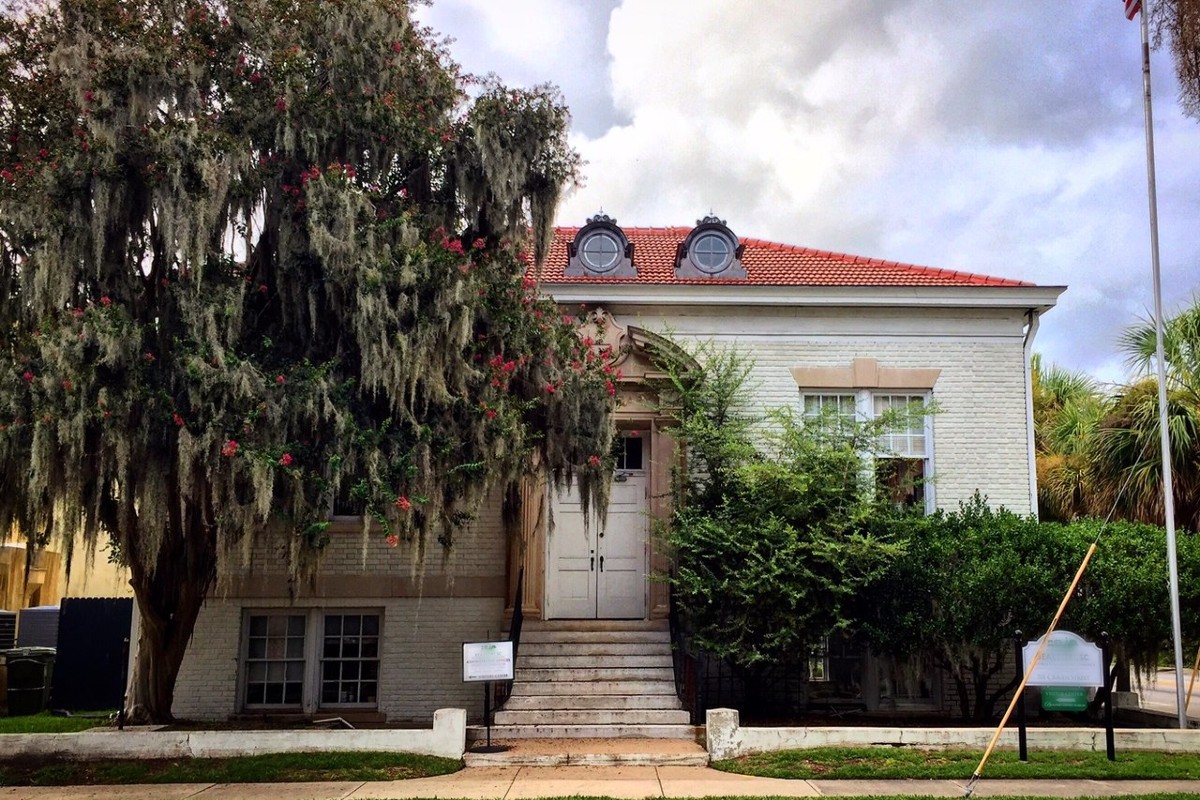
This neat-looking building has cool roof tiles. But where is it? Send your guess to feedback@statehousereport.com. And don’t forget to include your name and the town in which you live.
Our previous Mystery Photo
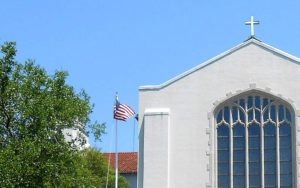 Our Nov. 13photo, “Big window” should have been familiar to any of the tens of thousands of Citadel graduates in South Carolina. It showed a big window at Summerall Chapel on the school’s campus.
Our Nov. 13photo, “Big window” should have been familiar to any of the tens of thousands of Citadel graduates in South Carolina. It showed a big window at Summerall Chapel on the school’s campus.
And several people identified it, including: Gerald Braun of Florence; Bill Segars of Hartsville; Allan Peel of San Antonio, Texas; David Lupo of Mount Pleasant; Kevin Mertens of Greenville; Will Williams (Class of ‘89) of Aiken; and John Hart and Jay Altman, both of Columbia.
Segars shared this: “The cruciform-shaped Gothic design building was built in 1937 by the Fiske-Carter Construction Co. as designed by C. R. McDonald. It was named in honor of Citadel president and Gen. Charles Pelot Summerall and is located on the Avenue of Remembrance.”
Peel added, “Summerall (1867-1955) (was) a senior United States Army officer. Summerall commanded the 1st Infantry Division in World War I, was chief of staff of the United States Army from 1926 and 1930, and was president of The Citadel between 1931 and 1953. Today the chapel serves the South Carolina Corps of Cadets and the broader Citadel and Charleston communities. The chapel is non-sectarian, and hosts Catholic, Protestant and Episcopal worship services weekly during the academic year. Additionally, many special events, such as weddings and the annual Christmas Candlelight Service, are held in the chapel.”
Send us a mystery: If you have a photo that you believe will stump readers, send it along (but make sure to tell us what it is because it may stump us too!) Send to: feedback@statehousereport.com and mark it as a photo submission. Thanks.
 ORDER NOW: Copies are in Lowcountry-area bookstores now, but if you can’t swing by, you can order a copy online today.
ORDER NOW: Copies are in Lowcountry-area bookstores now, but if you can’t swing by, you can order a copy online today.
ABOUT STATEHOUSE REPORT
Statehouse Report, founded in 2001 as a weekly legislative forecast that informs readers about what is going to happen in South Carolina politics and policy, is provided to you at no charge every Friday.
Meet our team
- Editor and publisher: Andy Brack, 843.670.3996
- Special correspondent: Lindsay Street
Donate today
We’re proud to offer Statehouse Report for free. For more than a dozen years, we’ve been the go-to place for insightful independent policy and political news and views in the Palmetto State. And we love it as much as you do.
But now, we can use your help. If you’ve been thinking of contributing to Statehouse Report over the years, now would be a great time to contribute as we deal with the crisis. In advance, thank you.
Buy the book
Now you can get a copy of editor and publisher Andy Brack’s We Can Do Better, South Carolina! ($14.99) as a paperback or as a Kindle book ($7.99). . The book of essays offers incisive commentaries by editor and publisher Andy Brack on the American South, the common good, vexing problems for the Palmetto State and interesting South Carolina leaders.
More
- Mailing address: Send inquiries by mail to: 1316 Rutledge Ave., Charleston, SC 29403
- Subscriptions are free: Click to subscribe.
- We hope you’ll keep receiving the great news and information from Statehouse Report, but if you need to unsubscribe, go to the bottom of the weekly email issue and follow the instructions.
- Read our sister publications: Charleston City Paper (every Wednesday) | Charleston Currents (every Monday).
- © 2020, Statehouse Report, a publication of City Paper Publishing, LLC. All rights reserved.















 We Can Do Better, South Carolina!
We Can Do Better, South Carolina!